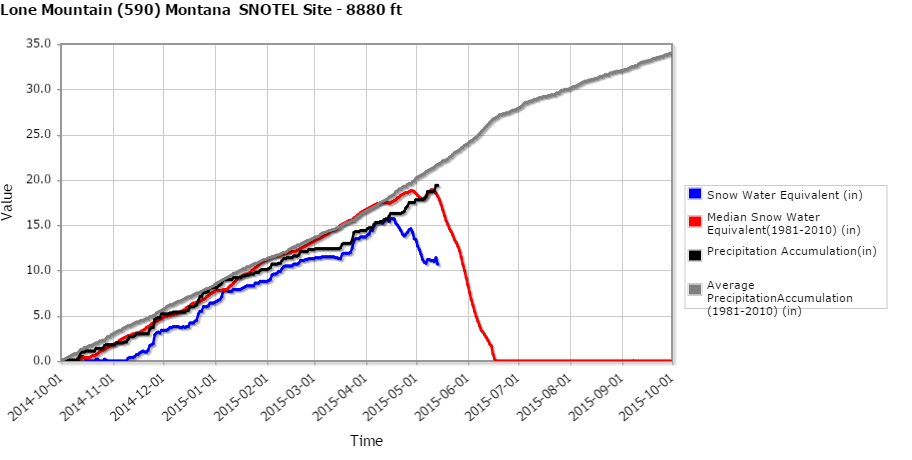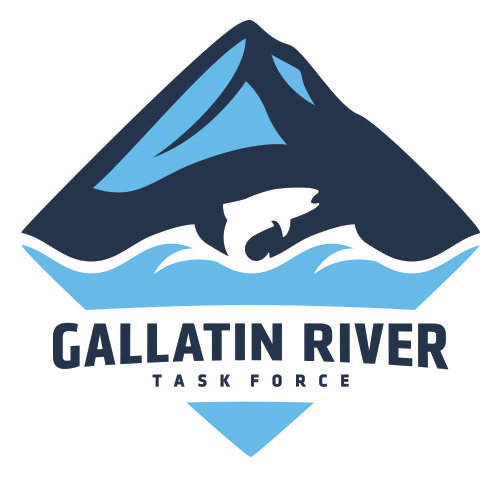Here is a summary of the Basin Outlook Report as of May, 2015 courtesy of NRCS.
This winter brought record low snowfall and abnormally warm temperatures to the American West. Although Montana fared better than many Western states, the water outlook for this summer is bleak.
High elevation spring snowmelt feeds between 50-80% of Montana’s annual water supply. Runoff from melting snow either flows directly into rivers and lakes or percolates into underground aquifers. Groundwater recharges streams when the mountains are dry.
Month after month, Montana outdoor enthusiasts and water users alike hoped that weather patterns would shift, bringing much-needed to snow to the mountains. However, warm and dry conditions persisted. This spring, mountain snowpack peaked 2-3 weeks early throughout the state, with snowmelt occurring at all elevations throughout April.
Conditions vary significantly, even within the same watershed. The Gallatin River Watershed experienced two different winters. Snowfall in the Upper Gallatin was well below average for most of the winter, while the ranges farther north received more snow. As of May 1, snow-water equivalent (SWE) in the Gallatin Basin was 59% of normal.

Data from the Lone Mountain SNOTEL site for the water year to date. Graph shows snow water equivalent and precipitation accumulation as a fraction of average.
This spring, low streamflows will peak ahead of schedule. Precipitation this spring and summer will play a critical role in determining the volume of runoff. When compared to snow, the amount of rain Montana has received this water-year-to-date has been closer to normal.
The water forecast for this summer reflects the lack of snowfall this winter. Scientists use precipitation, temperature, soil moisture, and historical streamflow data to calculate the future water supply. As of May 1, streamflow in the Upper Gallatin at Gallatin Gateway was predicted to be 65% of average and 60% of last year.
Every rain cloud has its silver lining. Reservoir storage in Montana is well above average. Carryover storage from last year will augment low snowfall this winter. Hopefully, spring rainfall and carryover storage from 2014 will carry us through what is predicted to be a hot and dry summer.
For more information: Basin Outlook Report, May 1, 2015

